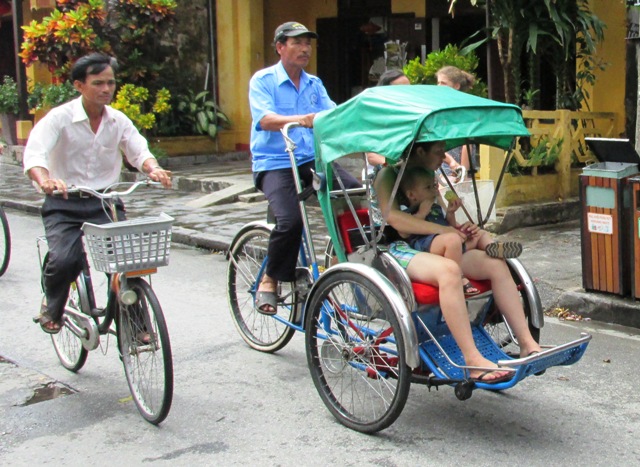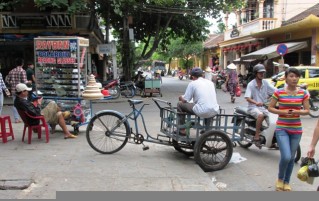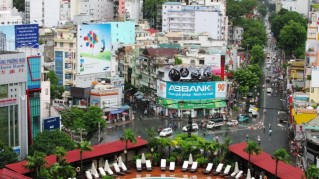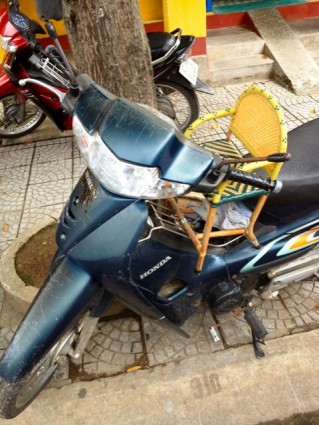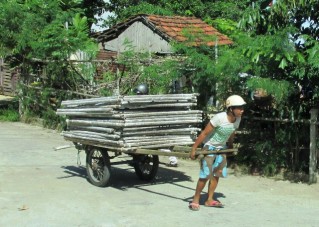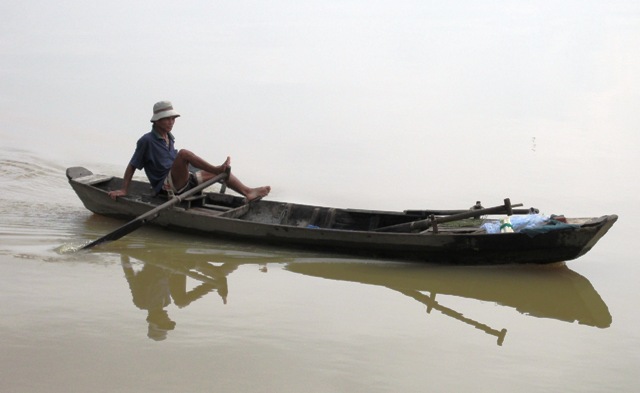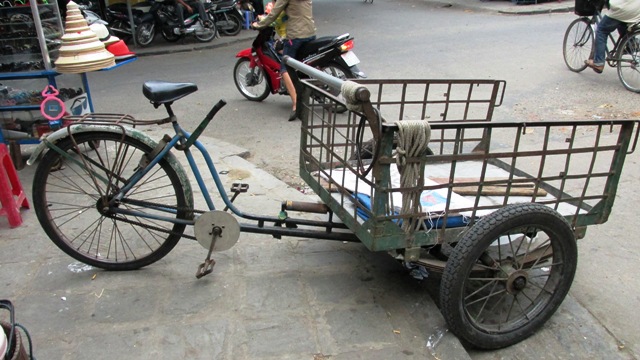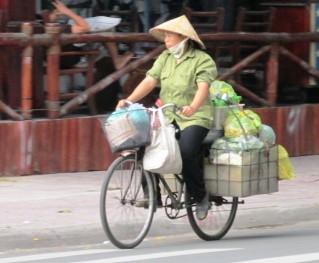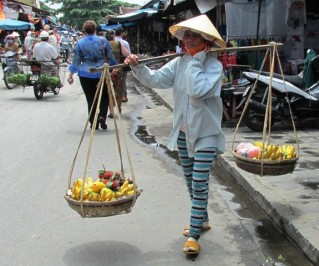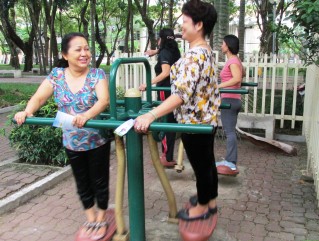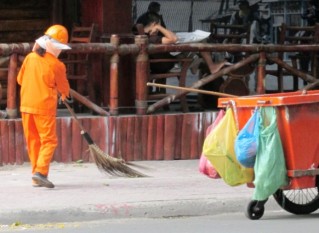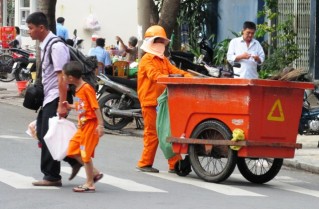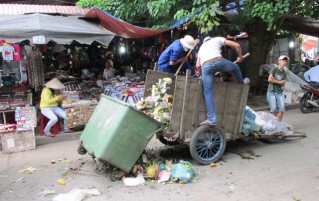If ever I am overrun by a million motorbikes with cartoonish beep-beeps blaring as I cross a Missouri roadway, I will immediately think of Vietnam.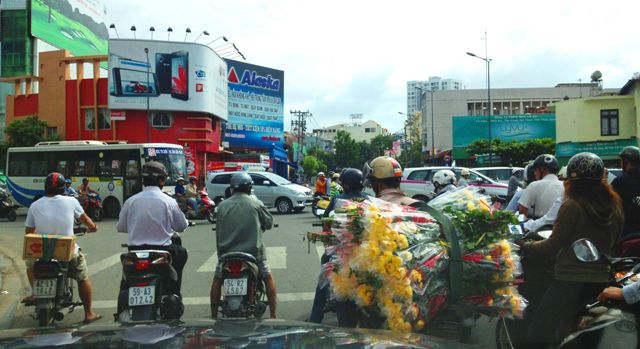
Although I have stated emphatically for years that my feet will never leave solid ground again, I accepted an opportunity to travel with a marketing team last month to Southeast Asia. In just two weeks, we visited three cities in the southern and central parts of Vietnam. Our first stop was Ho Chi Minh City, the former Saigon.
As soon as our bus left Saigon International Airport, the pesky bleeps came at us from every direction. It was nearly midnight, yet we were in the midst of a disjointed symphony of electronic tootles and honks that never stops – and, from what I could discern, carries on for no particular reason.
I later learned there are 3 million motorbikes in Ho Chi Minh City. Drivers must be at least 18 years old to obtain a license and must wear a helmet, but it seemed that’s where the rules and regulations stopped. I watched as motorbikes buzzed down sidewalks, where, incidentally, much other business and socialization takes place, including sweeping, sleeping, plucking, cooking, eating, game-playing and motorbike fixing.
Woven wicker and bamboo infant carriers hold the tiniest passengers atop the fuel tank, while toddlers generally sit or sometimes stand on the seat between their parents or siblings. The largest human load I personally saw was a family of four zipping through town, but I heard tales of a family of five (or was it six?) on a motorbike.
 With small engines (50cc to 400cc), motorbikes are considered the most economical and versatile form of transportation for many Vietnamese. They even have “moto” taxis. We saw some amazing things toted on motorbikes – computers, six full water-cooler jugs, furniture of all sorts, caged chickens, huge framed pictures and bundles of coconuts that nearly obscured the driver.
With small engines (50cc to 400cc), motorbikes are considered the most economical and versatile form of transportation for many Vietnamese. They even have “moto” taxis. We saw some amazing things toted on motorbikes – computers, six full water-cooler jugs, furniture of all sorts, caged chickens, huge framed pictures and bundles of coconuts that nearly obscured the driver.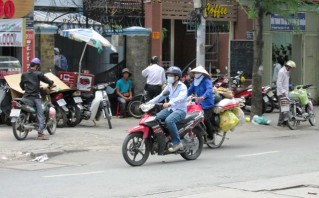
As one of our interpreters told me, the motorbike population exploded in the last 20 or so years. Along with the noise and chaos, air pollution is also now a serious problem. Many riders, pedestrians and street workers wear dust masks (often with brightly colored designs or cute slogans) to prevent breathing the toxic fumes. In some parts of China, motorbikes have already been banned for this reason.
When daylight came, I was pleased to see that bicycles and other human-powered devices are still abundant in Vietnam. The iconic rickshaws are now mostly used to cart tourists around, but large tricycles with heavy-duty carts on the front still haul tools, market goods and heaping piles of fresh produce. I admired the cyclists’ agility and wondered how many of us could pilot such monstrous loads.
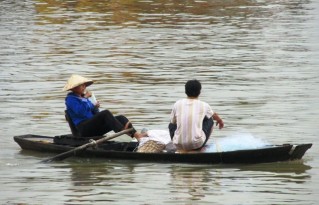 On the waterways, another pedal-powered vessel caught my attention. The long, wooden boats appeared like any other until I saw the operators row casually by – with their feet. Unlike chunky plastic paddleboats found at waterparks, these sleek craft are built for fishing and graceful passage – low to the water, quiet and non-polluting.
On the waterways, another pedal-powered vessel caught my attention. The long, wooden boats appeared like any other until I saw the operators row casually by – with their feet. Unlike chunky plastic paddleboats found at waterparks, these sleek craft are built for fishing and graceful passage – low to the water, quiet and non-polluting.
In Hoi An old town market, I watched a barefoot man stitching sandals with a treadle sewing machine out on the sidewalk. I’m not sure if he brings his sewing machine outside to draw attention to his shop or simply because it is cooler out there. Either way, I admired his workspace and craftsmanship.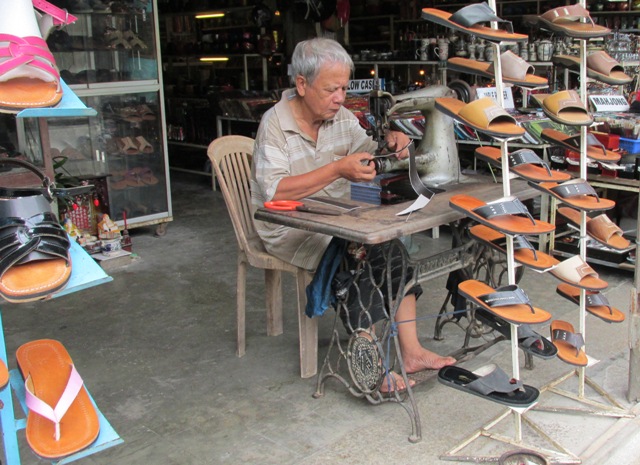
Still commonplace, too, are the handy carrying poles made of bamboo with baskets strung from both ends. The weight and bulk carried by tiny women my mother’s age astounded me.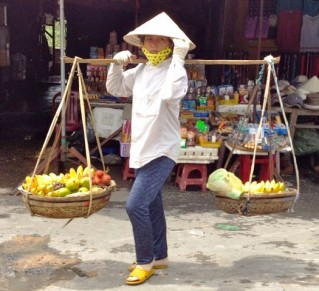
Once I looked past the motorbikes, I marveled at the amount of walking and other physical activity going on around me.
Vietnam also seems to be a country that encourages fitness, as all manner of free exercise equipment and group aerobic and yoga classes are in the numerous city parks. Before the sun is even up, scores of men and women of all ages are kicking, stretching and twisting to start the day.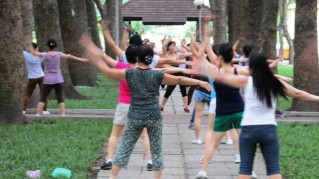
I came back from Vietnam with plenty of pictures and ideas for human-powered tools. And, I know just the guy who can build them for me.
